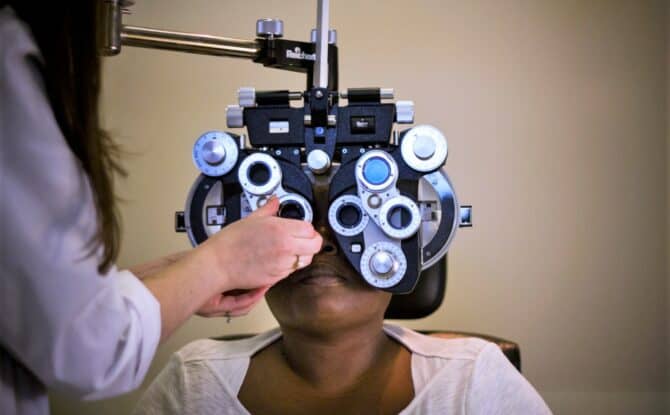
Preparing for the Coming Increase of Low Vision Needs
Humans are visual creatures. Our vision is our primary gateway for many aspects of our lives, including learning, picking up on social interactions and social cues, cooking and travel.
Vision is so important to us that, when given a choice, most sighted people would prefer to lose their hearing, a limb, or even some cognitive function rather than lose their sight. Meanwhile, the prevalence of vision loss increases with age, forcing adults who have used sight as their primary sensory input to adjust their daily lives.
“One of the most common emotions we encounter among new patients is fear,” says The Lighthouse’s Senior Vice President of Clinical Services Dr. Kara Crumbliss. “People are afraid that when they begin to lose their vision, they won’t be able to continue doing the things they loved, like reading or playing cards with friends.”
Simply put, vision loss is scary, and when things are scary, we often choose to ignore them for as long as possible. However, with an aging population and an increase in chronic health conditions that can lead to low vision, the time to prepare for an onslaught of people requiring vision services is now.
“More than 4.2 million Americans – or about 2.5% of the country’s total population – have a vision disability,” Dr. Crumbliss says. “That number is expected to more than double to 9 million by 2050, and the economic cost of that increased need, including medical expenses, care and lost wages, will be $373 billion.”
Fortunately for those individuals, and the overall economy, The Chicago Lighthouse has been quietly gearing up its comprehensive Low Vision offerings, including Low Vision appointments, expanded resources and access to assistive technology.
For instance, we continue to expand our My Tools For LivingSM online marketplace where people from across the country and around the world can learn about and purchase assistive technology. The site includes an interactive quiz that enables individuals to find the best products to suit their needs.
Thanks to a grant from the State of Illinois, The Lighthouse recently hired another full-time Orientation & Mobility (O&M) instructor to help individuals learn to navigate independently using a white cane.
Finally, The Lighthouse hopes to expand its Bergman Institute for Psychological Support to become a center where psychologists can learn about and manage the emotional and mental health needs of people facing vision loss.
“We know there is going to be a great need for people coping with vision loss in the coming years, not just in terms of examinations, but also to remain independent and engaged with their communities,” Crumbliss says. “We want them to know The Lighthouse will be ready for them when they need us.”
When you contribute to The Chicago Lighthouse’s Low Vision Services, you are helping people who are blind or vision impaired, now and in the future.


